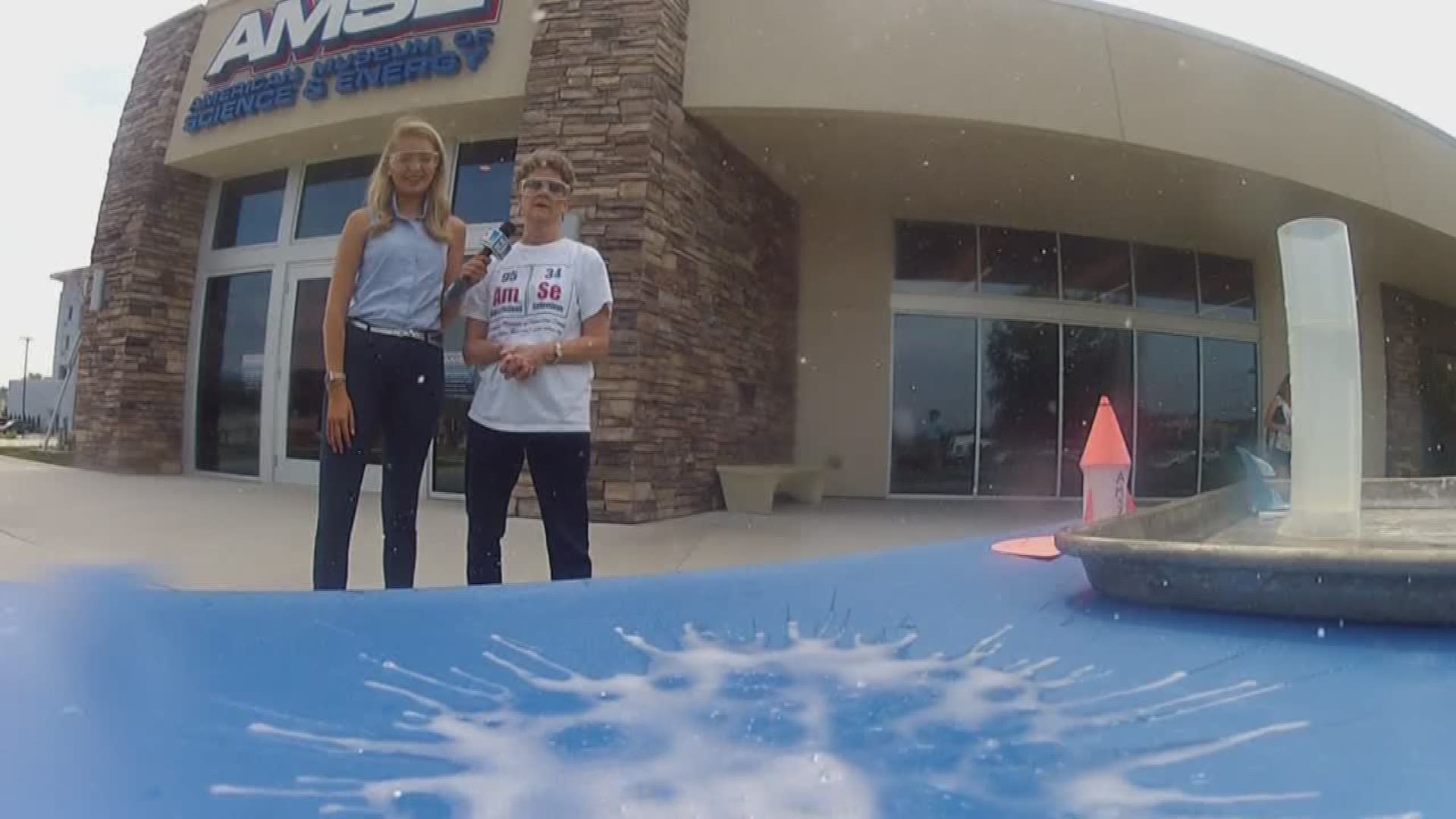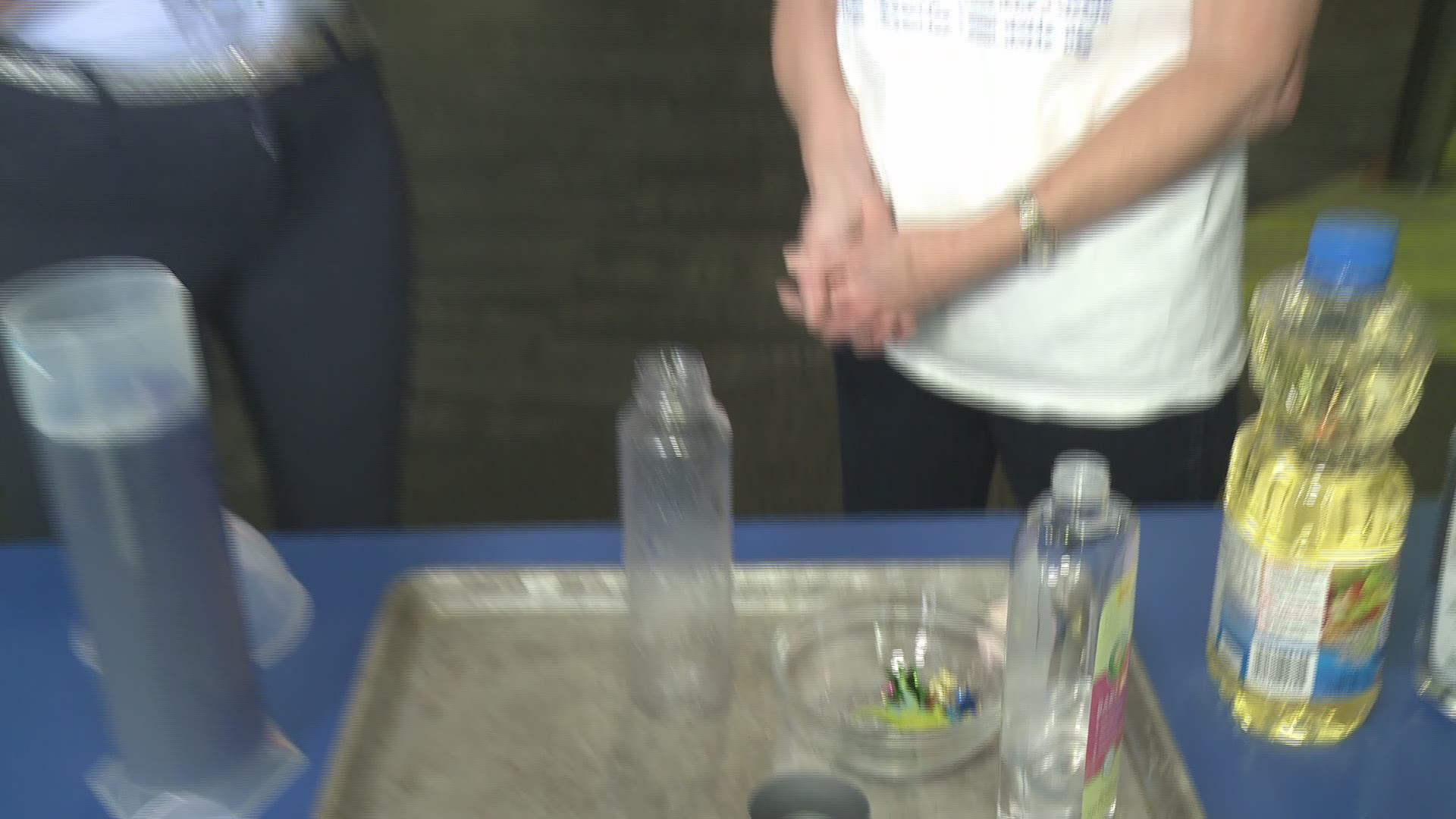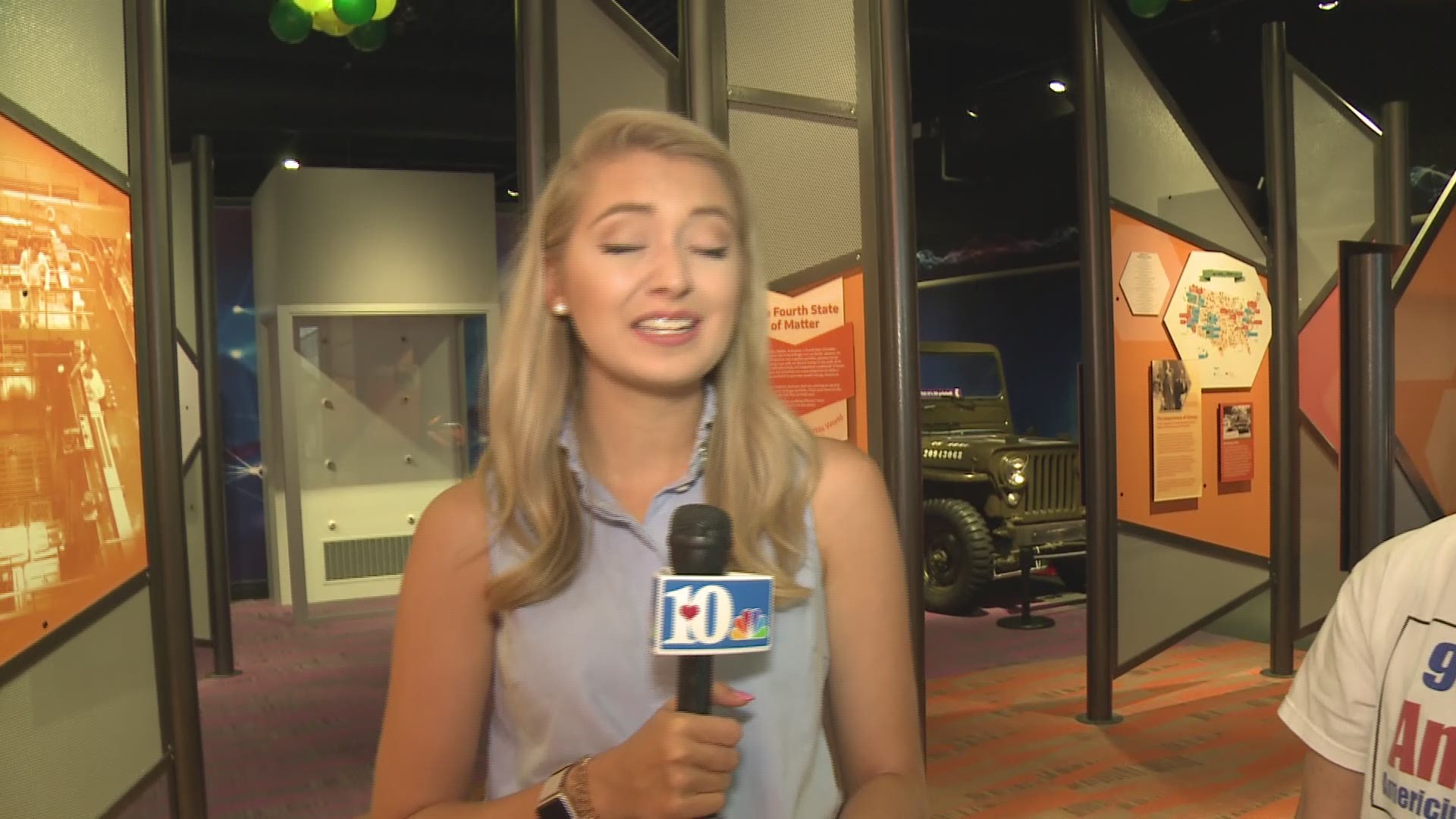OAK RIDGE, Tenn. — The American Museum of Science and Energy has plenty of fun science experiments that can be done at home with children.
Launching film canister rockets, mixing a DIY lava lamp and making homemade ice cream in a bag are just a few ways to make sure your summer activities are fun and educational!
AMSE educator Kris Light walked us through the experiments.
FILM CANISTER ROCKET
Step 1: Fill canister about 2/3 full with water.
Step 2: Drop in 1/4 of an Alka Seltzer tablet.
Step 3: Tightly cap the canister. {this is crucial to the success and you have to work fast}
Step 4: Turn upside down and place on a flat surface. {outside might be best unless you have open space and don’t mind the water!}
Step 5: Stand back with protective eyewear on!
Step 6: repeat with less water and ½ of an Alka Seltzer and see if the results change.
The physics: A canister with a larger volume (or amount) of water does not allow enough carbon dioxide to fill the canister thus the chemical reaction ejects the water out rather than forcing the canister up. A canister with less water and more Alka Seltzer allows more carbon dioxide to build up creating a greater reaction and a higher vertical launch.
MAKE A HOMEMADE LAVA LAMP IN MINUTES!
Mix food coloring and water in small containers.
Fill bottles with baby oil about 1/2 to 2/3 full.
Use an eye dropper to check out how the colored waterfalls through the oil without mixing.
NOW MAKE YOUR HOMEMADE LAVA LAMP FIZZ
Once finished testing out the eyedropper and colored water, we poured the rest of the colored water into each bottle. The safest way was to grab a funnel. We let the oil and water settle before continuing with our lava lamp experiment.
Add an Alka Seltzer tablet to each one. Watch the cool chemical reaction.
MAKE HOMEMADE ICE CREAM
Ingredients:
- ½ cup half and half or whipping cream
- ¼ tsp vanilla
- 1 TBSP sugar
- 3 cups ice
- ⅓ cup kosher or rock salt
- Gallon size zip top bag(s)
- Quart size zip top bag(s)
- Sprinkles, chocolate sauce, fruit (optional but really “the best part” ingredients!)
Directions:
- In a gallon size bag, place ice and salt; set aside.
- In a smaller bag, mix together half and half, vanilla and sugar; close tightly.
- Place smaller bag inside gallon size bag.
- Shake for about 5 minutes.
- Use gloves as the bag gets very cold.
Why does the bag get so cold? When you mix the salt and ice you are making a solution. Adding salt to the ice lowers the temperature at which water freezes. You will actually notice your ice melting as your ice cream ingredients start to freeze.
Shaking the bag allows the warm cream mixture to move around to allow for better freezing. Plus it also creates a little air that makes the ice cream a bit fluffier.
Is ice cream a liquid or a solid? Homemade ice cream changes states of matter, also more chemistry! It starts out as a liquid but changes to a solid in its frozen form, but it can go back to a liquid when it melts. This is a good example of reversible change as it’s not permanent.
You will definitely notice that the bag becomes much too cold to handle without gloves, so please make sure you have a good pair of gloves to shake with.
AMSE SUMMER CAMP
AMSE also offers a summer camp each year. In 2019, it will be held on June 24-28, from 8 a.m. to 3:30 p.m. each day.
According to the website:
"AMSE’s Science Camp is designed for rising fifth (must be 10 years old by June 1, 2019), sixth, and seventh graders, with a focus on a variety of science topics approached via field explorations and hands-on activities. Located at the historic Freels Bend Cabin site, campers cover topics such as habitats, life sciences, chemistry, physical sciences, forensics, weather, space, and electricity. The week includes special guest speakers as well as a tour of the Oak Ridge National Laboratory and AMSE."



